It may surprise you that many initiated witches today do not talk about the cauldron, and yet, it is one of the most recognizable tools of “the trade” to folks outside of the religion of witchcraft. Surprisingly, most Druids discuss the use of a cauldron more frequently than initiated witches do. Many Halloween images and television shows make the cauldron a very central figure within programming concerning witchcraft, so why would so many modern witches of today not discuss the cauldron in books, blogs and in talks?
The interesting thing is that cauldrons are very practical tools that come in all shapes, sizes and makes. They can serve as a practical tool of the witch today and can also serve as a magical tool. Unlike other covens, cauldrons serve as a very recognizable feature in our own Wolfa Coven – though it is not always seen in the same light amongst all the many witchcraft traditions.
To me – first and foremost, the cauldron is a practical tool. It can hold the Seasonal feast at the quarterly meetings that can be heated or brewed right on the outdoor fire or can be carried to the Sabbat – making it a quick meal to be able to heat up and be enjoyed outdoors. When the cooler nights of the year come in, this warm soup and brew can be a real comfort.
In the photo, this modern type of cauldron holds a wonderful soup that was made by one of the Vestals of our coven after the Spring Seasonal. This particular soup was not made on the fire outdoors, but on the gas stove (open flame) in the kitchen in a modern cauldron – a large cooking pot! Yes, a cauldron is foremost a cooking pot for food to be shared by the coven.
The stereotypical image of a cauldron boiling and frothing over an open flame outdoors is also one that evokes the power of the imagination in the mind of the witch. In fact, we do have a ritual in which this is used: a cauldron, outdoors over the fire where thought-forms are boiled up in such a brew. Another ritual is performed using a cauldron on the tripod outdoors to make a traditional love philtre, which in that particular secret recipe, is able to be consumed. It is a very magical experience indeed!
Cast Iron seems to be the most traditional type of metal that you see most cauldrons made of. As a practical witch, I also have a beautiful red enamelled cast-iron cauldron that is used only for edible brews. In this particular pot, (not pictured here) I will heat up and brew apple cider to which I have added various warming herbs that raise the body temperature during cold winter nights, and even herbal brews such as a simple cough syrup made of Elderberries! Herbal tisanes as well are made within it that may be shared for pleasure, as a folk remedy or for a magical effect as well – potions that are safe to drink.
I personally feel it is important for me to keep a separate cauldron of this nature, such as my enamelled cast-iron one for edible potions only to ensure that no contamination of non-edible things have a chance of mixing!
A temple cauldron that was used at a Yule Sabbat is pictured here in which a candle was placed inside it and the cauldron ringed with fresh cut pine and holly from outdoors. It is even small enough that we can leap over it if we wish while shouting out our wishes.
This very simple fire-bowl pictured above is one that is lightweight, made of metal and easy to move and carry as a portable receptacle to make a balefire (baalfire) or a need-fire. It has a very cauldron-like look to it. It is sometimes placed outdoors and we can sit around it late at night and enjoy the flames for warmth. It can also be used as a central need-fire for the purposes of spell-making outdoors.
Magical workings that are sometimes called “Petitions” can be offered up to the flames of the fire and be consumed. This seems to be most typically done by writing on paper with a pen or pencil wishes that can be consumed and seems to be a trusty stand-by when you have a lot of folks attending and not sure what type of magic you wish to work. It is a way of presenting prayers for ourselves and our loved ones to the Life-Force or the Supreme Being that we acknowledge. It also follows one of the fundamental traditions of when you release a spell, the release should be a culmination of the desire – such as if it was planned and burned during the proper planetary/angelic hour. After it has been burnt, it is easy to forget about the request and move on – allowing it to work without constantly digging up the freshly planted seed!
At the Seasonal Rituals, we tend to take a moment to collect up petitions to be given over to the fire. Many of these are typically for concentrating healing prayers for other people or will be written out in an appropriate way for the Seasonal. For example, the next Seasonal we shall celebrate is the Winter Seasonal at the time of All Hallows’. The petitions we would write at the Rite of Winter or All Hallows’ would be petitions related to releasing our past failures in the last total solar cycle, including the release of past wrongs and ignorance. (Intentional and unintentional) It is not a time for long periods of mourning but marking the period of rest and reflection and the invocations and incantations given are to ask that we survive and be carried through the dark winter season.
Witches love tossing burnable petitions into a fire. The collection of herbs, plants and flowers put together for a particular purpose and tied together with a bit of string can be a natural petition – from the earth and back to the earth. If you do not know the meaning of flowers and plants, it is easy to find at a local bookstore a few books on the language of flowers and what they represent – as people would have in the past been able to send secret messages by the types of flowers they left for another person, so why not a message to the Mother Goddess and Father God? You might also be able to put these together related to the planetary correspondence. If you need help with certain herbs or plants and understanding their planetary correspondence to put together a Herbal petition, you can review these in Culpepper’s Herbal or in ‘Herbs: Medicine & Mysticism’ by Sybil Leek. Sybil’s book is an up-to-date version of Culpepper’s English Herbal with great additional information.
Some cauldrons might take on a regional flair depending on the culture of your locale. Since our coven is located in the “Hex-Belt” of Pennsylvania, finding old cauldrons called “Hex Pots” at times can be found. The one pictured above is one particular antique. They are typically painted with birds known as distlefinks, tulips, etc. Most of these “Hex Pots” are typically for decoration and not for magical or consumable cooking use. This one above is one of a couple of antique Hex Pots I have from my location.
You would be surprised how many homes in Pennsylvania that you might drive by and see people hang them in their front yard and plant flowers in them. This may not be a custom in all places, but it seems to be one in Pennsylvania culture.
I also have a small, separate cast-iron dish that I will typically add water and drops of a magical fluid condenser that has been prepared. These magical fluid condensers serve as methods of expansion and release of thoughts, utilizing the appropriate element to unload my thoughts into the ether so it may take shape – shaping the aether with the thoughts I wish them to form in order to reach its target. This is a potent form of elemental control using specially prepared potions and the gymnastics of the mind. I typically will keep that particular small cast-iron pan near the bottle of magical fluid condenser for just this purpose.
This photo is from a Candlemas past in which burned seasonal petitions were added to a cauldron-looking plant pot. A flower bulb was planted on top of it so that as the flower bloomed the desires of the coven would come true. I must say that this plant, the Amaryllis, turned out to be a beautiful and VERY LARGE one – to the size that I have NEVER seen it grow to before!
I must say that at least among the Wolfa Coven, the cauldron has not disappeared, but firmly an important part of our coven activities. One Priestess of our coven even commented a year ago that, “My husband has banned me from buying another cauldron!”
The cauldron is still an effective tool today like it once was. Whether a food safe cauldron is used to cook up the soup enjoyed by the coven, herbal tisanes, or even the old burnt petition or candles. It seems today that when the cauldron is used, it is used less and less for food to hold the Sabbat feast or for brewing tisanes and more so for burning petitions among witches that I have met outside of our coven.
One reason for this may be because the abundance of coffee mugs that most folks seem to have around. Brewing an herbal tisane works well in a coffee mug and provides extra room in the mug when you have to steep separate herbs at different times in order to make an effective potion without losing or disrupting the quality of the herbs being carefully steeped.
When the potion is most delicate, I will brew them right in the teapot.
Blessed Be & Happy Samhain!
Examples of fluid condensers:
Air Elemental Fluid Condenser:
For use with the air elementals – sometimes called the fairies or sylphs
Fire Elemental Fluid Condenser:
For use with the fire elementals – sometimes called the salamanders
Water Elemental Fluid Condenser:
For use with the water elementals – sometimes called the mermaids or the undines
Earth Elemental Fluid Condenser:
For use with the earth elementals – sometimes called the satyrs or the gnomes
Further references:
Elemental fluid condensers: https://covenofthewolfa.wordpress.com/2018/06/04/elemental-fluid-condensers/

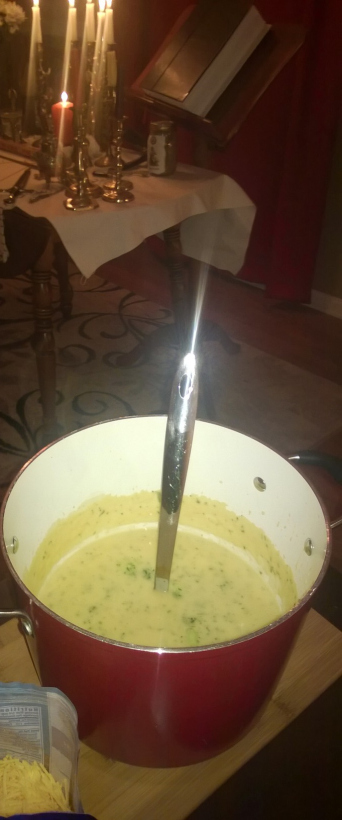
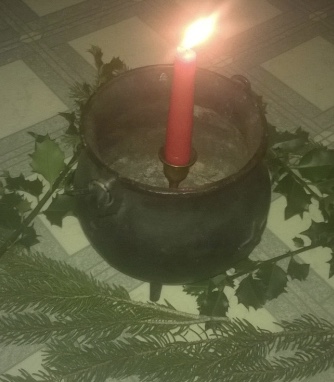
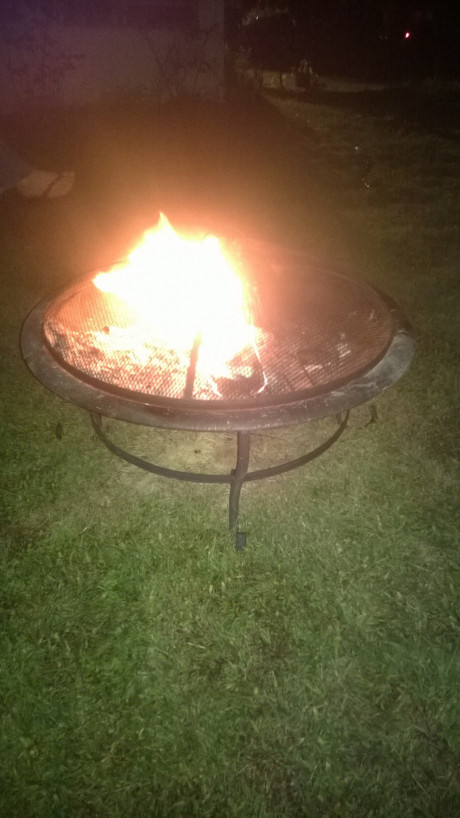
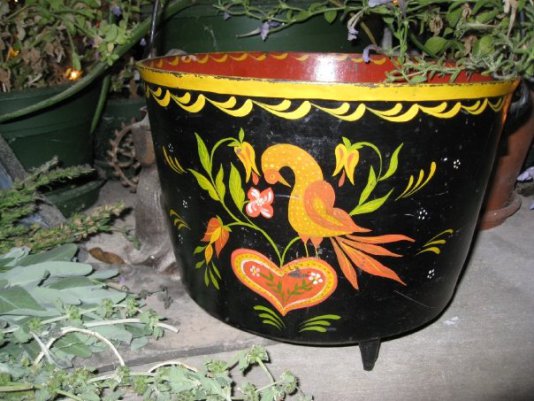
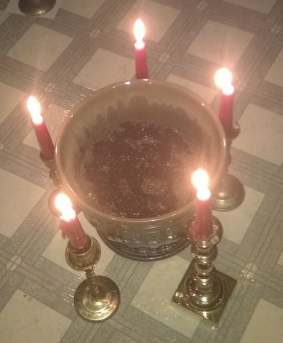
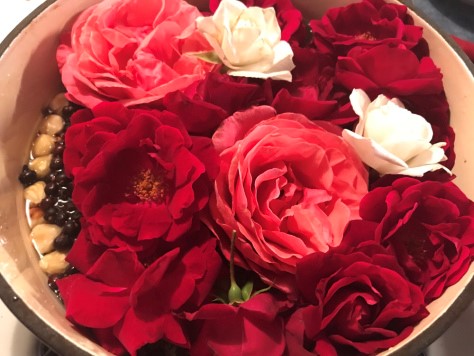
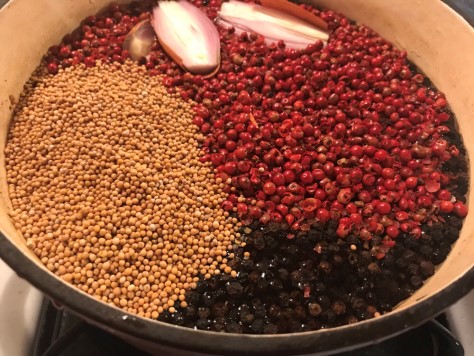
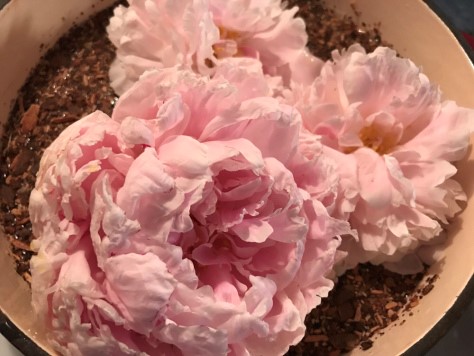
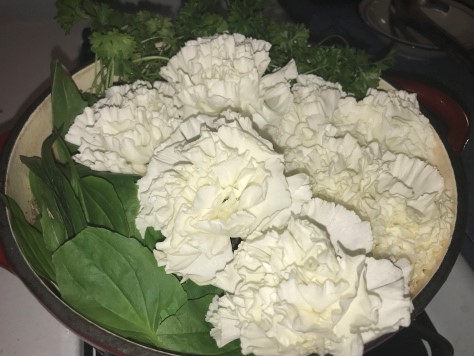
Great article! I very much enjoyed seeing all the different cauldrons in your collections! Thank you for contributing to our practice by sharing your valuable time and information!